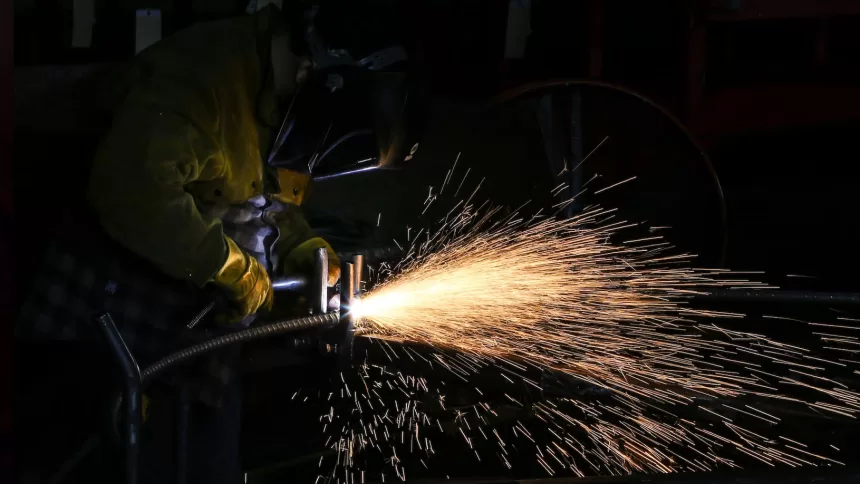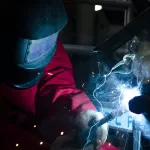Plasma cutting has revolutionized the metal fabrication industry with its precision, speed, and versatility. Over the years, advancements in technology have led to the emergence of new and exciting trends in plasma cutting. As a leading expert in the field, we are thrilled to share with you the latest innovations that are reshaping the plasma cutting landscape.
Plasma cutting is used in a wide range of manufacturing applications. Learn more about the latest trends in plasma cutting from Welding Town.
Welding Town
1. High-Definition Plasma Cutting
High-definition plasma cutting is at the forefront of modern cutting techniques. This technology utilizes advanced plasma arc systems and enhanced software algorithms to achieve superior cut quality, with smoother edges and minimal dross formation. High-definition plasma cutting is ideal for intricate designs, allowing for greater precision and finer detailing.
2. CNC Integration
Integration with Computer Numerical Control (CNC) systems has brought about a remarkable transformation in plasma cutting. CNC-driven plasma cutters enable automated control of the cutting process, eliminating the need for manual adjustments and reducing human errors. This integration not only enhances productivity but also ensures consistent and accurate results, making it a game-changer in the industry.
3. Multi-Axis Cutting
The introduction of multi-axis cutting has opened up new possibilities in plasma cutting. By enabling cutting along multiple axes simultaneously, this technology allows for the creation of complex 3D shapes with unparalleled precision. Industries such as aerospace and automotive have benefited immensely from this innovation, as it enables them to craft intricate components with ease.
4. Improved Consumables and Electrodes
Advancements in materials science have led to the development of improved consumables and electrodes for plasma cutting systems. These new components exhibit enhanced durability, extended lifespan, and better resistance to wear and tear. As a result, operators can achieve more efficient and cost-effective cutting processes, reducing downtime and maintenance costs.
5. Green Plasma Cutting
In recent times, environmental concerns have prompted the development of green plasma cutting solutions. Manufacturers are now focusing on creating plasma cutters that consume less energy and produce fewer emissions. Green plasma cutting not only contributes to a greener planet but also helps businesses reduce their energy expenses and carbon footprint.
6. Integration of IoT and Data Analytics
The integration of the Internet of Things (IoT) and data analytics has transformed plasma cutting into a smart and data-driven process. IoT-enabled plasma cutters can collect and analyze real-time data during cutting operations, providing valuable insights into performance, efficiency, and predictive maintenance needs. This data-driven approach enhances decision-making, optimizes processes, and maximizes equipment uptime.
7. Increased Portability and Compactness
Traditional plasma cutting systems were often large and cumbersome. However, advancements in technology have led to the development of smaller, more portable plasma cutters that maintain the same level of cutting power. These compact units offer greater flexibility and ease of use, making them ideal for on-site cutting tasks and applications in confined spaces.
8. Hybrid Cutting Technologies
Hybrid cutting technologies that combine plasma cutting with other cutting methods, such as waterjet or laser cutting, have gained popularity in recent years. These hybrid systems offer the advantages of multiple cutting methods, allowing for increased versatility and the ability to handle a broader range of materials and thicknesses.
9. Augmented Reality (AR) Assistance
AR-assisted plasma cutting has become a reality with the advent of smart headsets and goggles. These AR devices provide operators with real-time overlays of cutting paths, measurements, and other crucial information, enhancing accuracy and efficiency during cutting operations.
10. Training Simulators
To keep up with the fast-paced advancements in plasma cutting technology, companies are investing in training simulators. These simulators provide a safe and cost-effective environment for welders and operators to practice and refine their skills without the risk of damaging actual materials. Training simulators help reduce learning curves and improve overall productivity.
Conclusion
As technology continues to advance, plasma cutting remains at the forefront of innovation in the metal fabrication industry. The latest trends discussed in this article, including high-definition cutting, CNC integration, and multi-axis cutting, showcase the immense potential of plasma cutting to revolutionize metalworking processes.
At [Your Company Name], we embrace these trends and continuously strive to stay ahead of the curve. By adopting the latest advancements in plasma cutting technology, we aim to provide our clients with top-notch services, unmatched precision, and the highest quality results.











